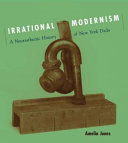

Most ebook files are in PDF format, so you can easily read them using various software such as Foxit Reader or directly on the Google Chrome browser.
Some ebook files are released by publishers in other formats such as .awz, .mobi, .epub, .fb2, etc. You may need to install specific software to read these formats on mobile/PC, such as Calibre.
Please read the tutorial at this link: https://ebookbell.com/faq
We offer FREE conversion to the popular formats you request; however, this may take some time. Therefore, right after payment, please email us, and we will try to provide the service as quickly as possible.
For some exceptional file formats or broken links (if any), please refrain from opening any disputes. Instead, email us first, and we will try to assist within a maximum of 6 hours.
EbookBell Team

4.0
56 reviewsJones enlarges our conception of New York Dada beyond the male avant-garde heroics of Marcel Duchamp, Man Ray, and Francis Picabia to include the rebellious body of the Baroness. If they practiced Dada, she lived it, with her unorthodox personal life, wild assemblage objects, radical poetry and prose, and the flamboyant self-displays by which she became her own work of art. Through this reinterpretation, Jones not only provides a revisionist history of an art movement but also suggests a new method of art history.
Jones argues that the accepted idea of New York Dada as epitomized by Duchamp's readymades and their implicit cultural critique does not take into consideration the contradictions within the movement -- its misogyny, for example -- or the social turmoil of the period caused by industrialization, urbanization, and the upheaval of World War I and its aftermath, which coincided with the Baroness's time in New York (1913-1923). Baroness Elsa, whose appearances in Jones's narrative of New York Dada mirror her volcanic intrusions into the artistic circles of the time, can be seen to embody a new way to understand the history of avant-gardism -- one that embraces the irrational and marginal rather than promoting the canonical.
Acknowledging her identification with the Baroness (as a "fellow neurasthenic"), and interrupting her own objective passages of art historical argument with what she describes in her introduction as "bursts of irrationality," Jones explores the interestedness of all art history, and proposes a new "immersive" understanding of history (reflecting the historian's own history) that parallels the irrational immersive trajectory of avantgardism as practiced by Baroness Elsa.